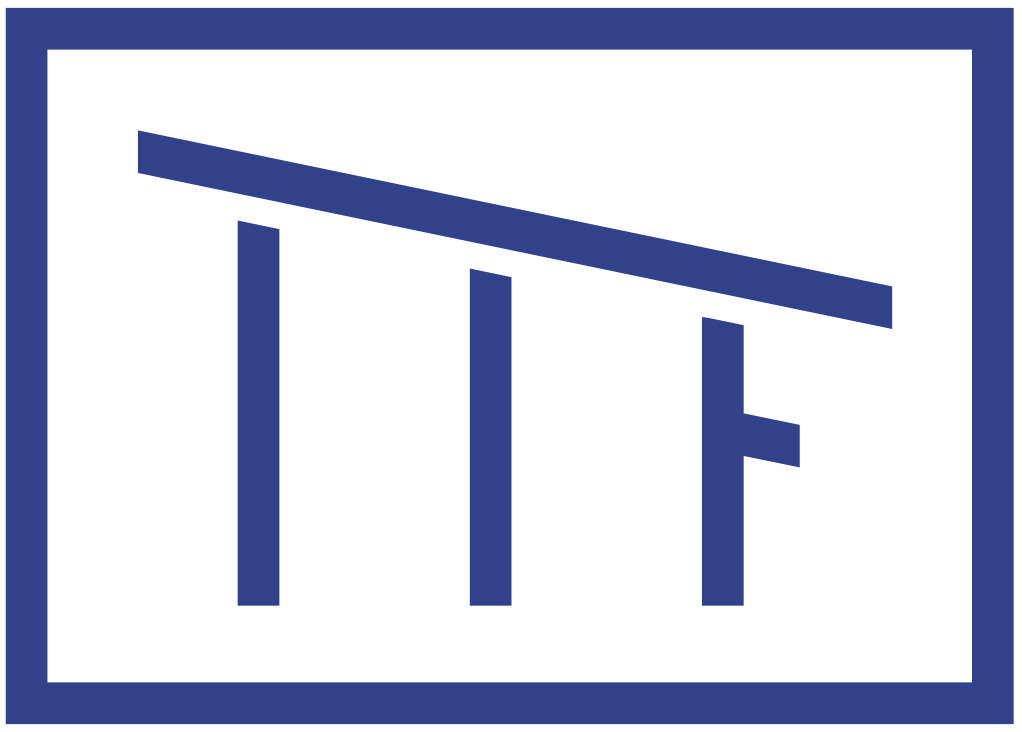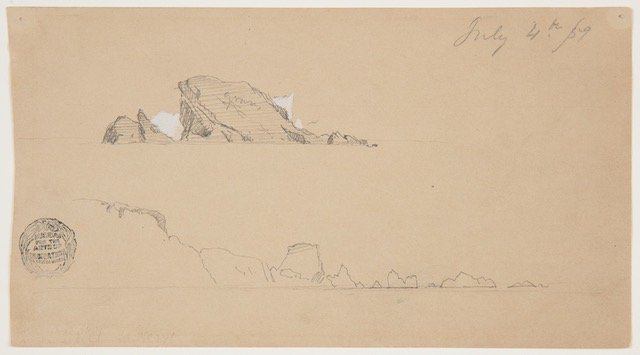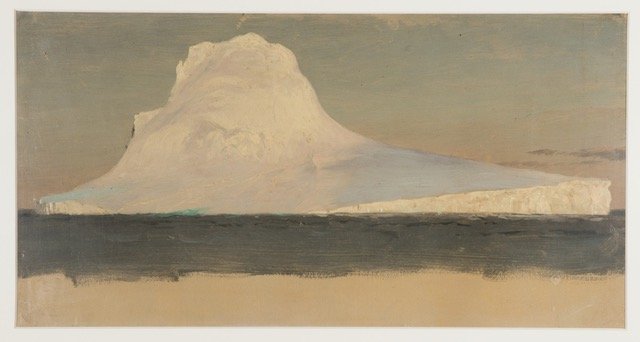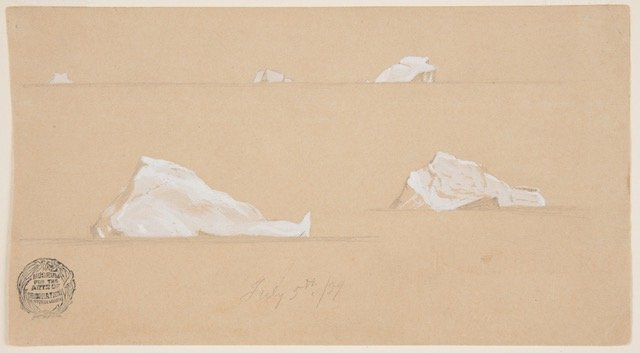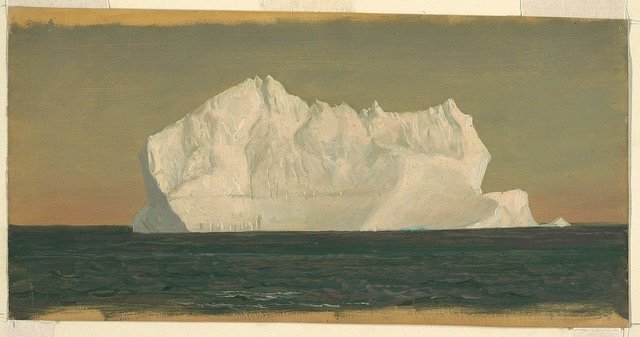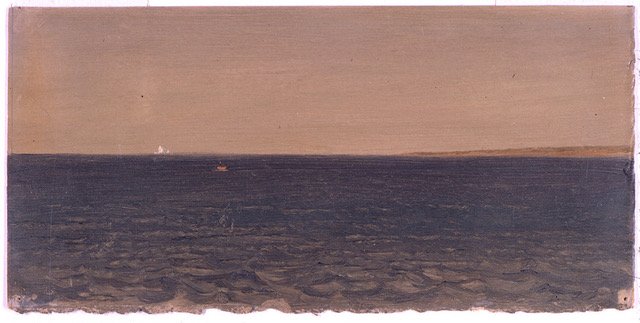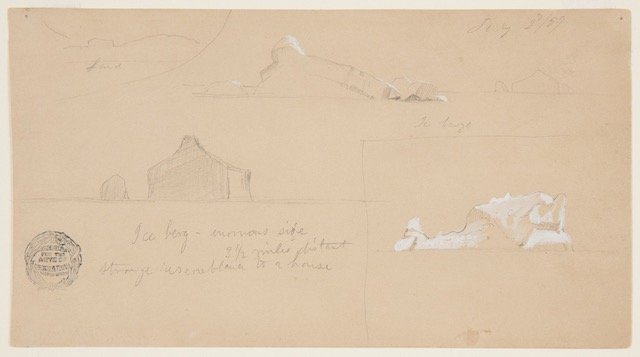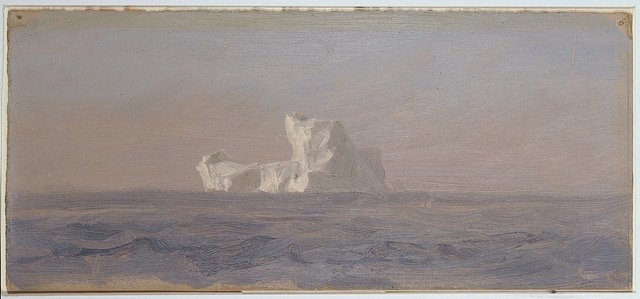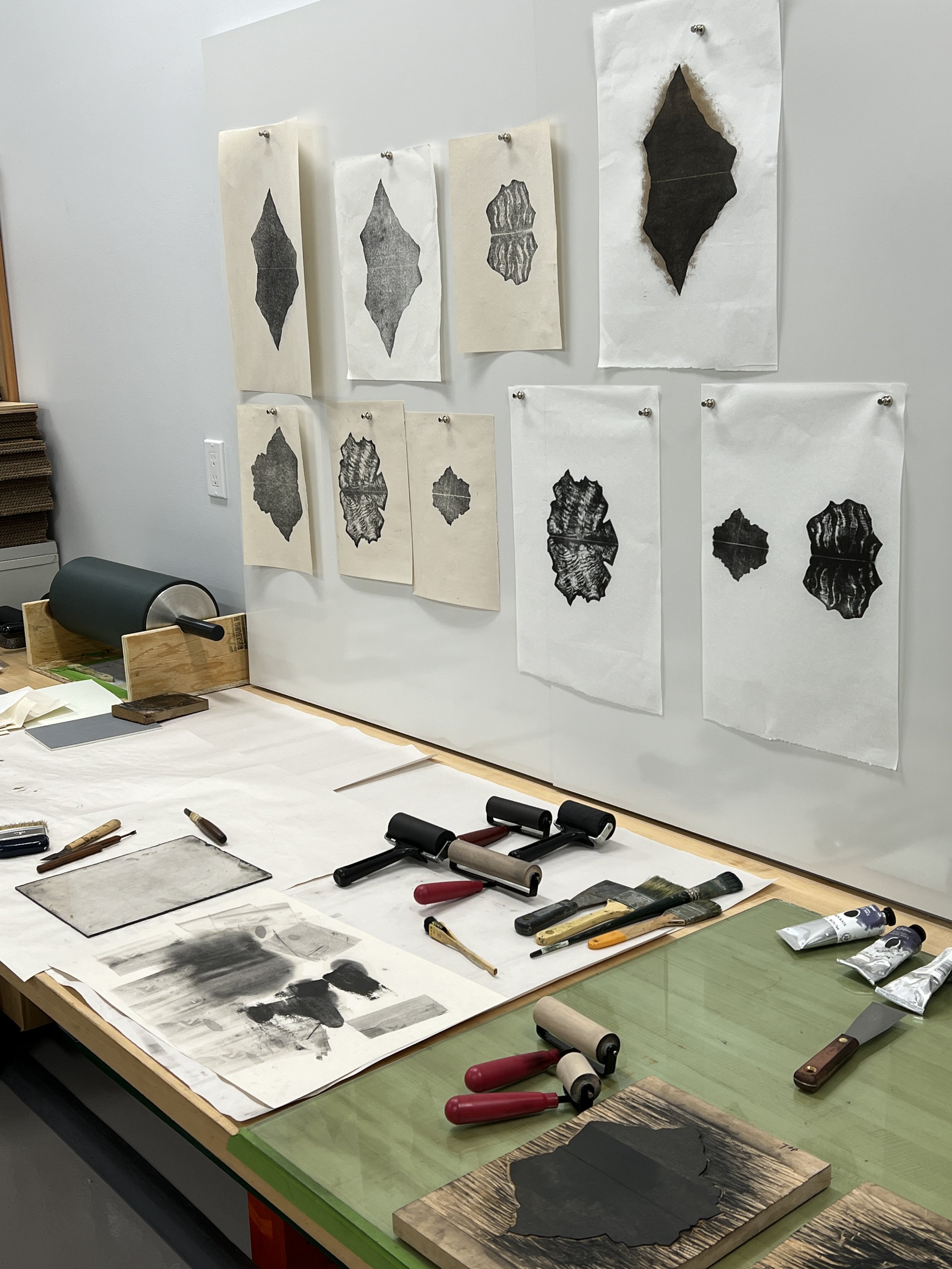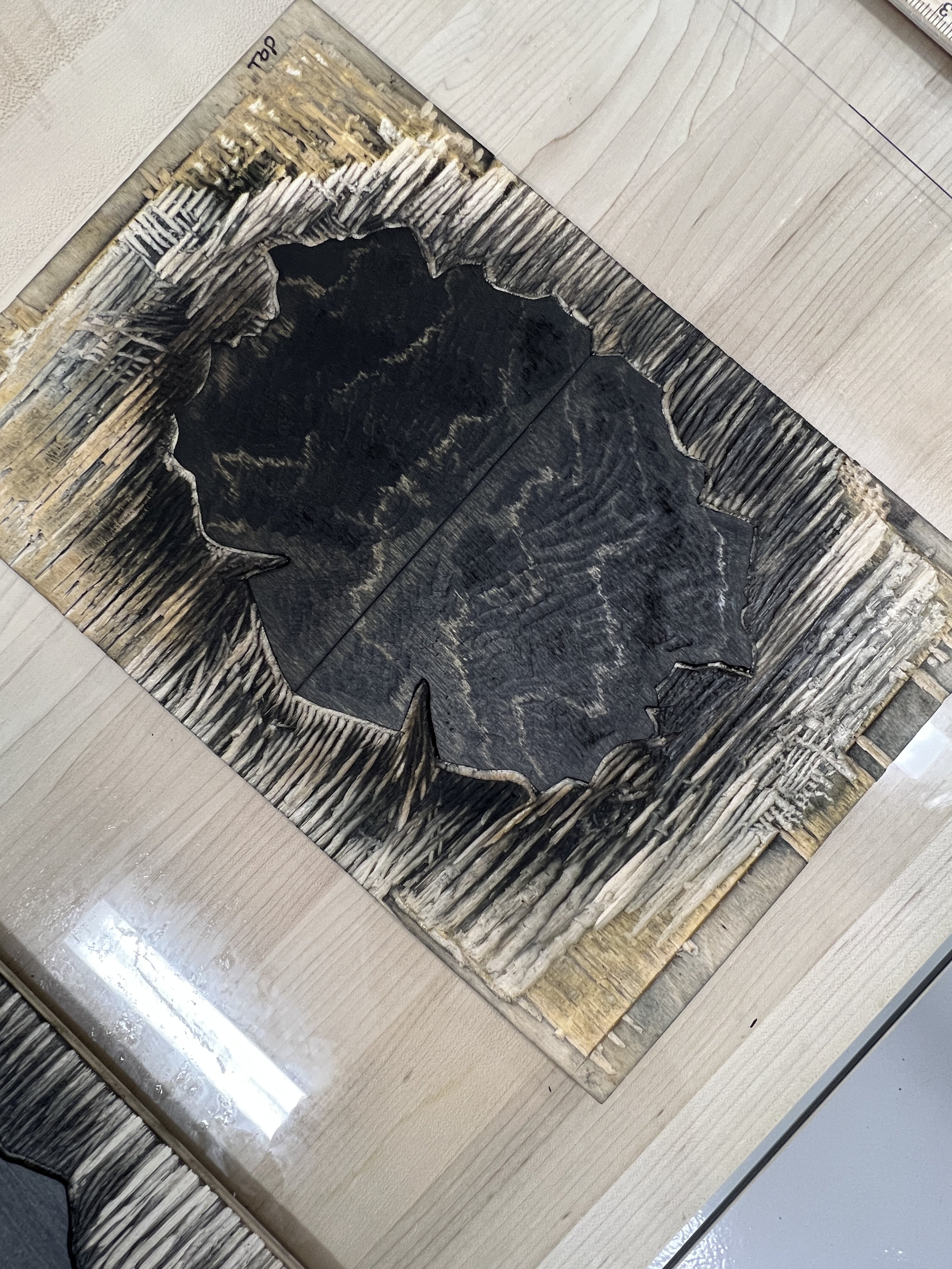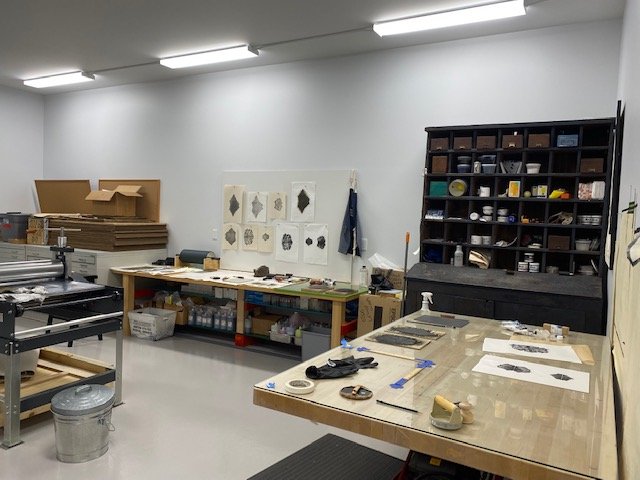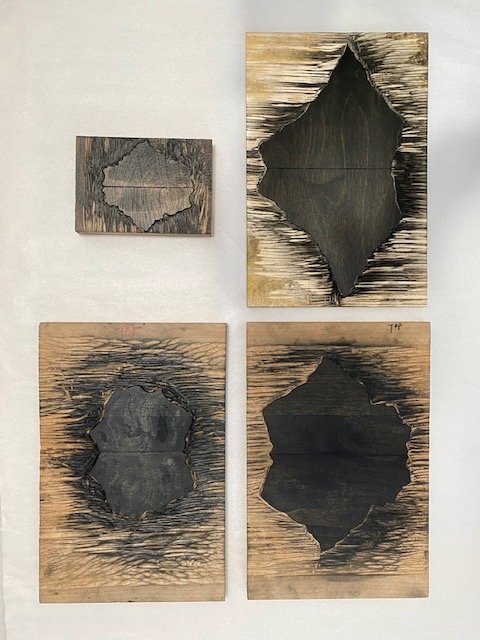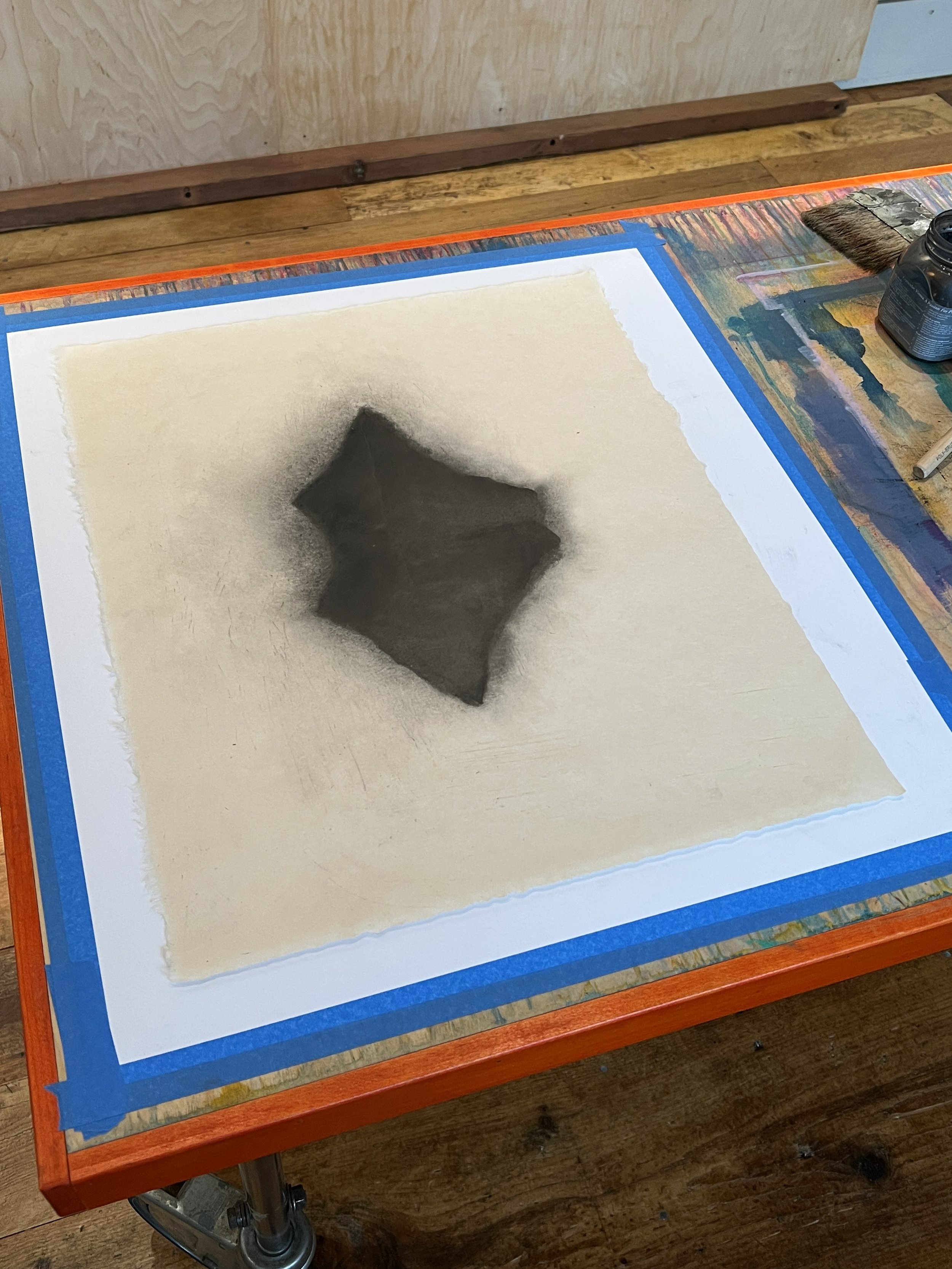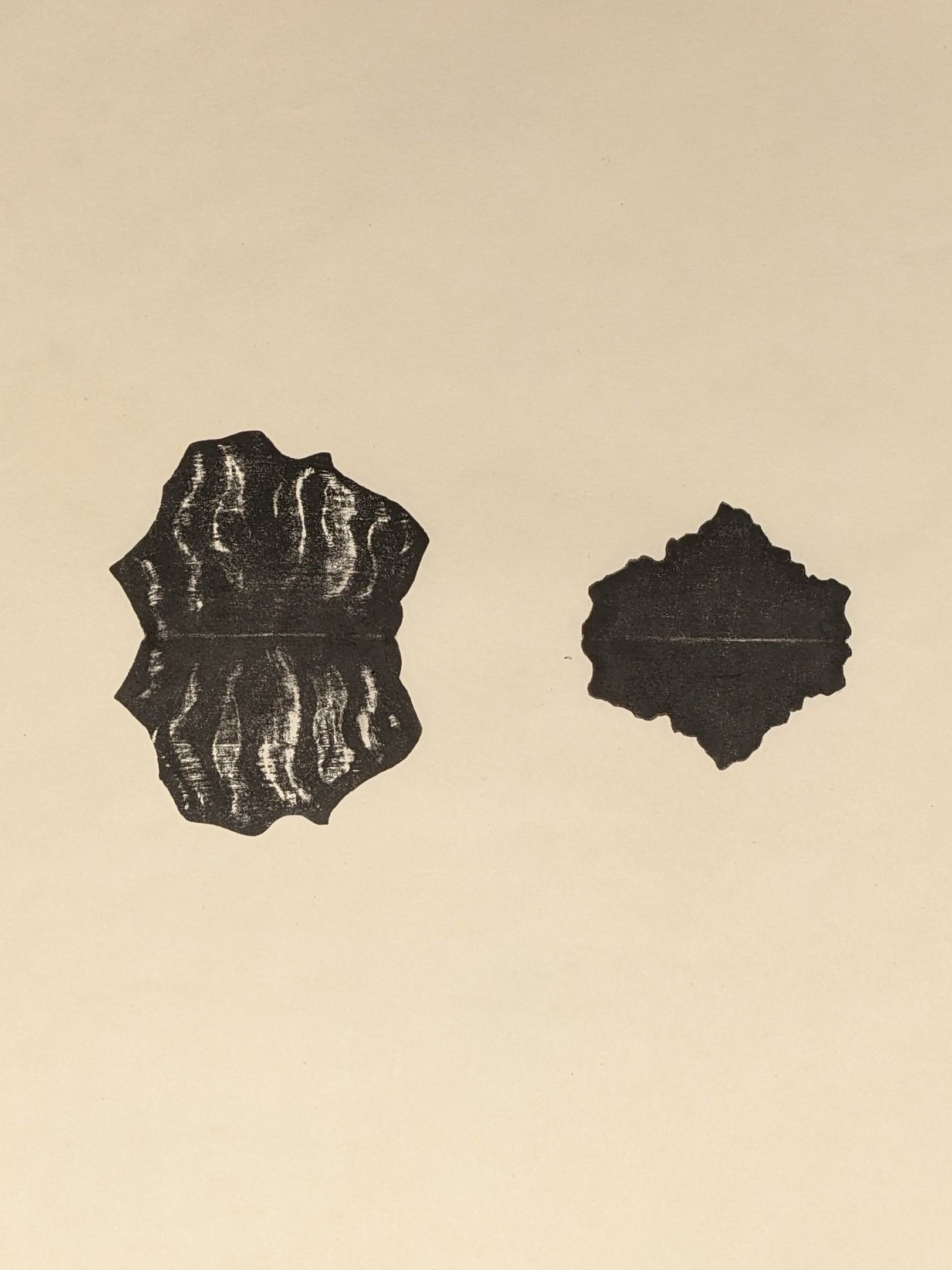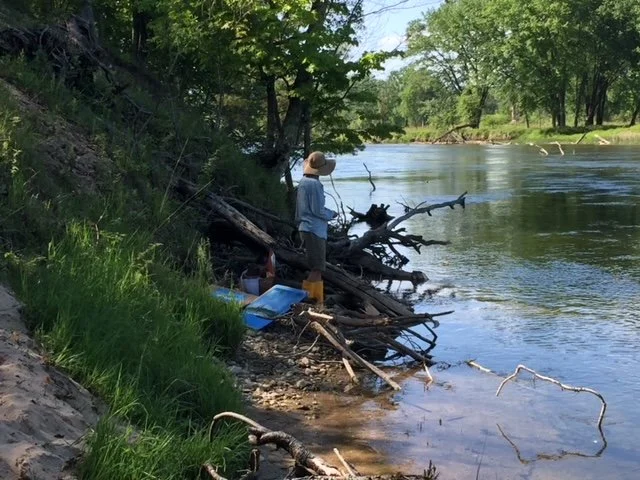Artist Journal: Debra Salopek
Over the course of the last two winters, 2020-2022, I have looked closely at, photographed, and drawn the ice formations that take shape along the northwestern shores of Lake Michigan. Coming to northern Michigan from the desert Southwest, lakeshore ice and dislodged shelves of ice that become free-floating icebergs became a source of fascination for me. This fascination then became the object of my project for Tusen Takk.
Frederic Edwin Church, The Icebergs, 1861
As I thought about icebergs and how best to represent these ephemeral forms in a series of drawings, I began looking at imagery of iceberg formations beyond those of the Great Lakes. I also began looking at how icebergs, in their extreme environment, had been represented by artists in landscape painting and photography. One notable discovery was the collection of iceberg studies by Frederic Edwin Church, completed during a voyage he undertook to Newfoundland in 1859 in order to gather studies for his iceberg-themed, grand painting, The Icebergs, 1861.
Lucy Meeko, A woman breastfeeding her baby, 1974
However, the ultimate influence for the black iceberg series came from looking at art closer to home: the Inuit print collection at the Dennos Museum. I was familiar with, and an admirer of, Inuit art and had visited the Dennos collection several times. The strong sense of form and complex design found in the artists’ stone and linocuts, that convey a world both foreign and mystical, in a very challenging medium is remarkable. I started looking at the images with purpose, focusing on how the artists treated the representation of their icy landscape. It was the stonecut print by Lucy Meeko, A woman breastfeeding her baby, 1974, that triggered the ‘moment of recognition’. The image is done in simple line but it is encased within an organic, black shape that floats on the surface of the paper.
The floating form in Meeko’s piece brought sudden clarity to the tentative concept that had begun to develop in my mind through thinking about representing icebergs. Lucy Meeko’s print clarified my interest in representing icebergs in a manner that was nonrepresentational. I chose the woodcut as an appropriate medium for the iceberg forms, and to acknowledge the Inuit influence on the concept and process.
I started drawing iceberg forms in charcoal and decided to mirror them, using a subtle intersecting line to separate the two forms. Making the icebergs black was visually stronger and more interesting, symbolic of a ‘cancellation’, referencing our disappearing glaciers and shrinking Polar ice caps, a climate change subtext. But the drawings are more about form than about what the forms represented. After developing several drawings of black icebergs, these were then transferred onto wood blocks and carved.
The final collection of forms in the ‘black iceberg series’ are open to suggestion and could easily represent formations other than those of icebergs. The objective, in the end, was to create a collection of shapes that were visually interesting; shapes that, collectively, contain the poetics of mystery, very much as the nature of icebergs themselves.
Related Program
Debra Salopek: Fallen Pieces of the Moon
March 30–May 14, 2023
Commongrounds, 2nd Fl
414 East Eighth Street
Traverse City, MI, 49686
(map)
Featured Artist
Born in California, raised in Mexico, Debra Salopek grew up bilingual, straddling 2 cultures. She received her BFA from the University of New Mexico in printmaking and drawing, has traveled and lived abroad for several years and makes the American Southwest her primary home. Debra worked as a fine art printmaker in Los Angeles, CA collaborating with artists such as Alex Katz, Robert Mangold, Silvia Plimack Mangold, Robert Therrien and others, before dedicating full time to her studio with a focus on painting and work on paper. She has exhibited nationally with work in corporate collections and museums; she is currently represented by the William Havu Gallery in Denver, CO, and the Kiechel Fine Art Gallery, in Lincoln, NE.
